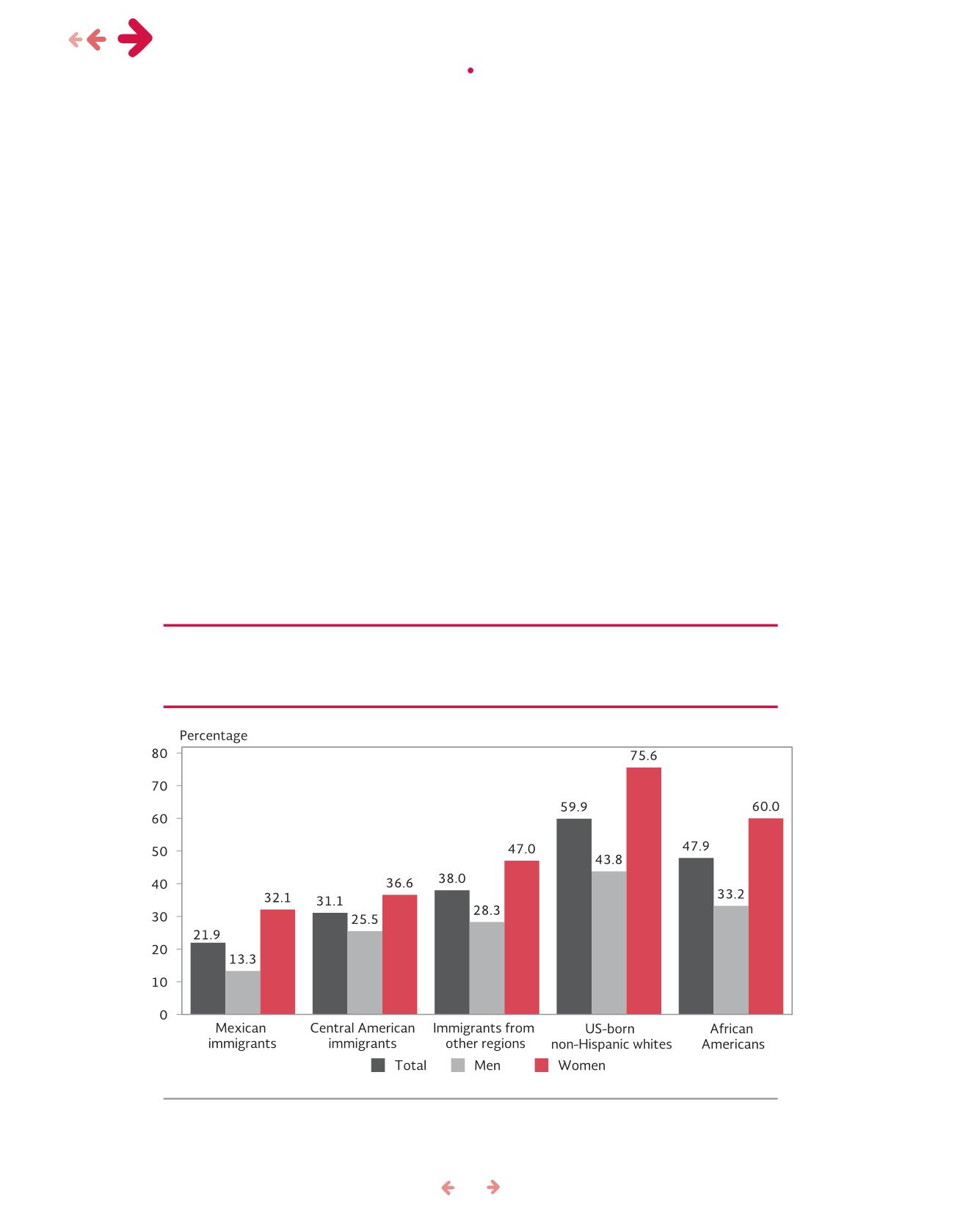
48
other immigrants andnatives (Figure36). Knowledge
of this innovation in cervical cancer prevention also
showsagender gap inall thegroupsanalyzed, towith
men having the lowest knowledge.
The information also indicates that tests
designed to provide for the early detection and
treatmentofcancersare lessfrequentamongtheHis-
panicpopulation(bothUS-bornand immigrant) inthe
United States, in comparison with non-Hispanic US-
bornwhites andAfricanAmericans (Figure37).
Healthcoverageandmedical serviceuseamong
Mexican immigrants in the United States is notice-
ably lower than among other groups in the country.
The population of Central American origin has also
seenadecrease in the level of health insurancecover-
age in recent years.
Unequal access also affectsmen disproportion-
atelyand is present across all agegroups. Childrenand
older adults areparticularlyaffectedbyexclusion from
the health care system. Though this inequality can be
observed in every state in the country, some inclu-
ding several that receive numerous Mexicanmigrants
provide immigrantsand their familiesdistinctlyunfavo-
rableconditions for social integrationandmedical care.
Overall, factors such as Mexicans’ concentration
in certain sectors of the economy also condition a
frameworkof salaryandbenefits,whichhas contributed
significantly to reproducing the economic and social
deprivation of this group in the United States. The
result is worse access to needed health services for
Mexican immigrants, and often for Central American
immigrants, than for all other groups. Mexican immi-
grantsare thegroup least likely to seeadoctor, obtain
neededdental careandeyeglasses, and receiveclinical
preventive services that can identify health problems
early so that they canbemoreeffectively treated.
Source: Migration Policy Bureau, SEGOB, based onU.S. StateHealthAccessDataAssistanceCenter,
National Health
InterviewSurvey
(NHIS), 2012. IntegratedHealth InterviewSeries.Minneapolis: UniversityofMinnesota.
Figure36. Populationbetween18and64years in theUnitedStates that has heard
of thevaccinationagainst theHumanPapillomaVirus (hpv), bygender, basedon region
of originandethnicityor race, 2012
migration & health •
mexican immigrants in the us: a 10 year perspective


